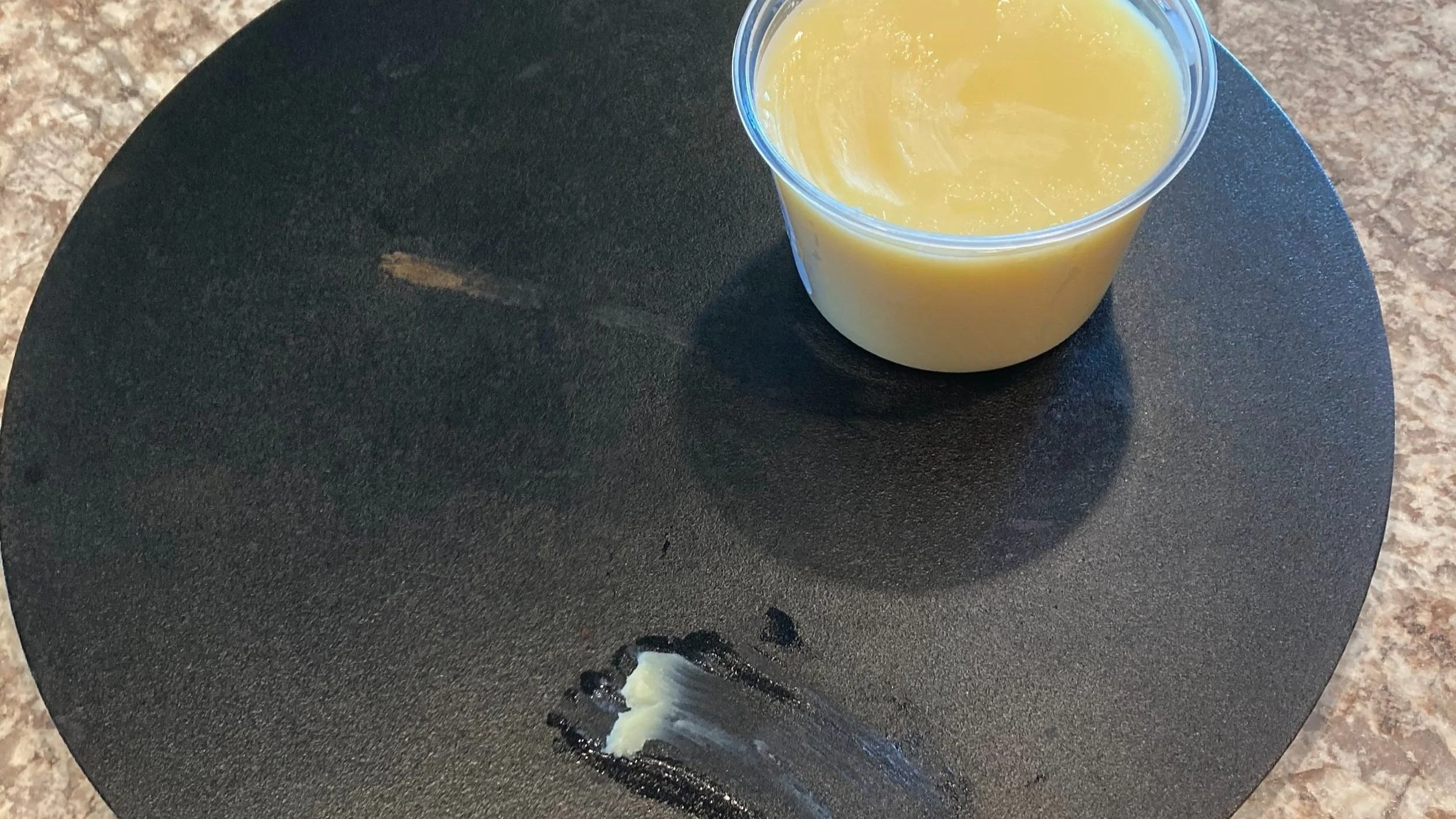For centuries, tallow was found in nearly every home in the Western world. It was used to make soap, skin salves, candles, lubricants, and was easily accessible for cooking oil.
In the last 70 years, tallow has all but vanished from our vocabulary. It’s been demonized by “health experts” and vegetable oil producers as an artery clogging, unhealthy fat when in fact, it is one of the best oils to both cook with and rub on your skin.
Interestingly in the last decade many people have started to question seed and vegetable oil health claims and are returning to traditional fats like tallow and lard.
What is Tallow?
Some mistakenly think that lard and tallow are the same thing, but they are very different.
The basic difference is that tallow comes from rendered beef fat (suet) while lard is produced from pork fat.
To make tallow, the suet is heated until it liquifies into gold colored oil. At this liquid state, the fat is then strained through a filter to remove impurities. Once cooled, tallow becomes hard.
Amazingly it is shelf-stable for up to 1 year and can last for many years if frozen immediately after rendering.
How to Use Tallow?
Since tallow has only made a comeback in recent years, many people have no idea how to use it, but tallow has an incredible number of ways it can be used.
Beef tallow has a 400-degree smoke point which makes it perfect for frying. Since you can get the oil really hot, you'll get better crispiness and you won't have to worry about gross burnt oil flavors ruining your meal.
Beef tallow enhances flavor when sautéing vegetables.
Beef tallow makes wonderful skincare products, like bar soaps, lotions, and salves.
Beef tallow adds a savory flavor to breads and biscuits.
Beef tallow makes a great lubricant for metal and conditions leather.
Beef tallow is perfect for seasoning cast iron pans..
There are so many uses for beef tallow that I could never list all of them.
Grain-Fed or Grass-Fed: Is All Tallow the Same?
Not all tallow should be considered the same. Tallow rendered from grass-fed cattle has a wealth of benefits not shared by its cousin, the grain-fed, factory-farmed cow.
Nearly all conventionally-farmed cows are fed a diet of GMO corn and kept in confined areas with no access to pasture or regular, daily sun. Most toxins are stored in an animal’s fat, which, in turn, can end up in your food or skin care products – yuck and gross!
The grass, fresh air and sunshine a pasture-raised cow is exposed to when allowed to graze naturally provides the building blocks for the production of vital nutrients inside the animal's body.
Just as the human body stores nutrients in the fat for later use, so does the cow, thus a wealth of benefits are hidden inside the fat or tallow of a grass-fed cow.
What Does Beef Tallow Taste Like?
Unlike lard which is fairly neutral in flavor and smell, beef tallow has more flavor and a mild, “beefy” smell. Beef tallow adds a pleasant savory flavor, but the taste of beef is in no way predominant.
It will not make everything you cook taste like beef so you can use it in nearly all cooking and baking when you want to impart an earthiness into your baked goods.
If you want sweetness in your cooking or baking, use lard instead.
Where Can I Purchase Grass-Fed Tallow?
Although traditional fats are making a comeback, high quality, healthy beef tallow from grass-fed animals is not likely to be found on the grocery store shelves.
About a year ago, we began carrying beef tallow in our farm store. Our beef tallow is from the suet of our grass-fed and finished beef cows and is processed at Das Schlacht Haus in Arthur.
It is packaged in approximately 14 ounce containers and is sold frozen. Come by the farm store, grab some tallow and let the experimenting begin.



